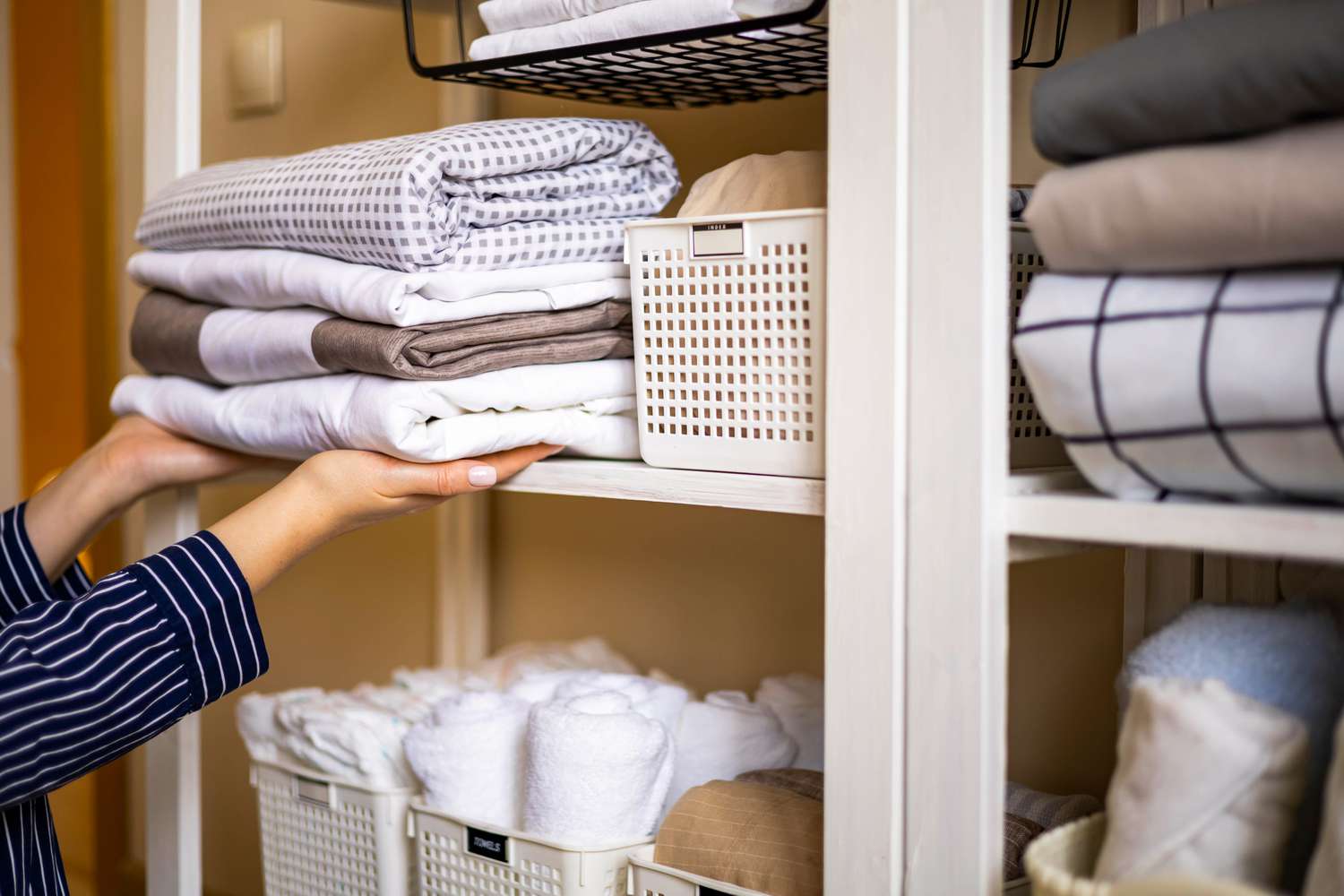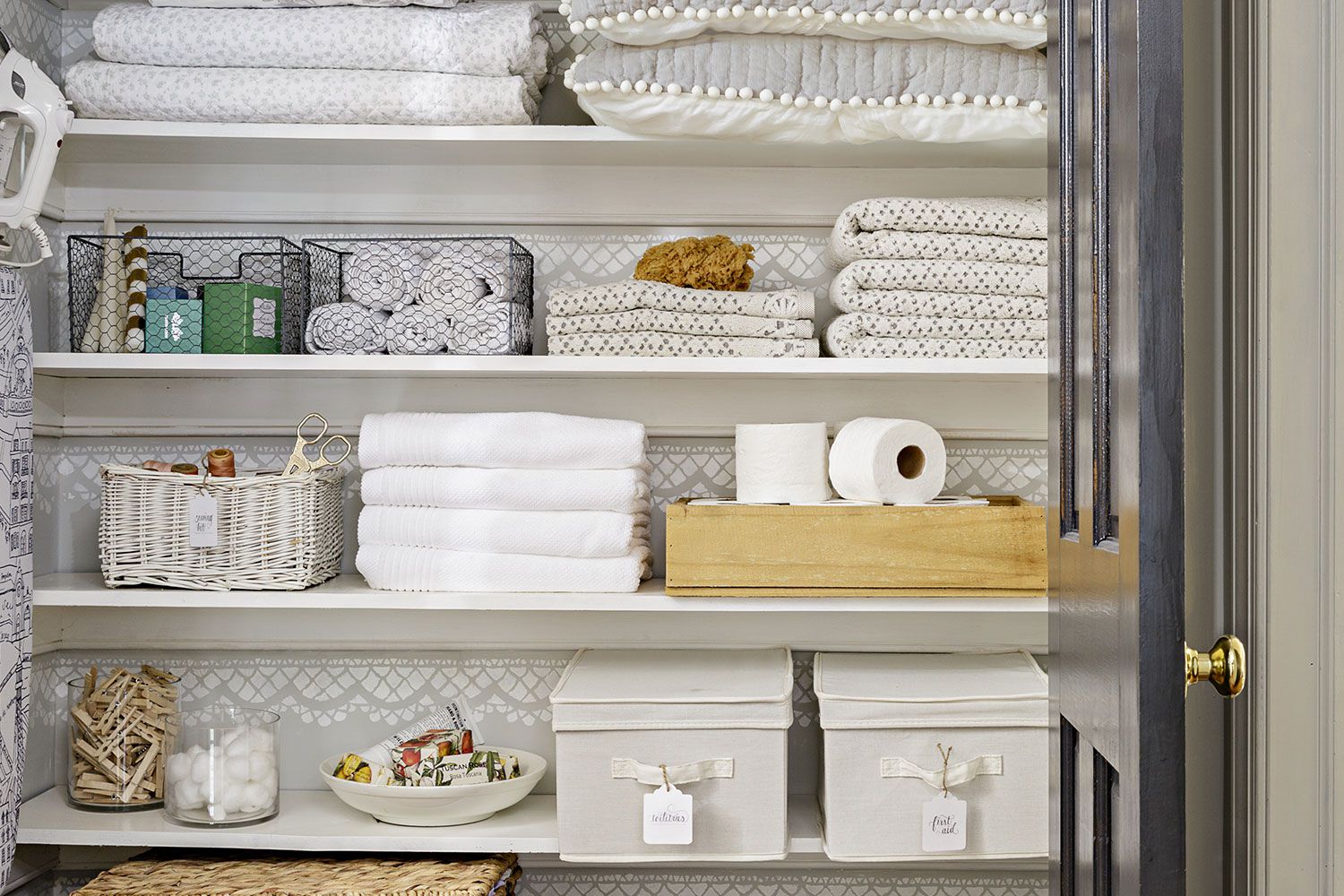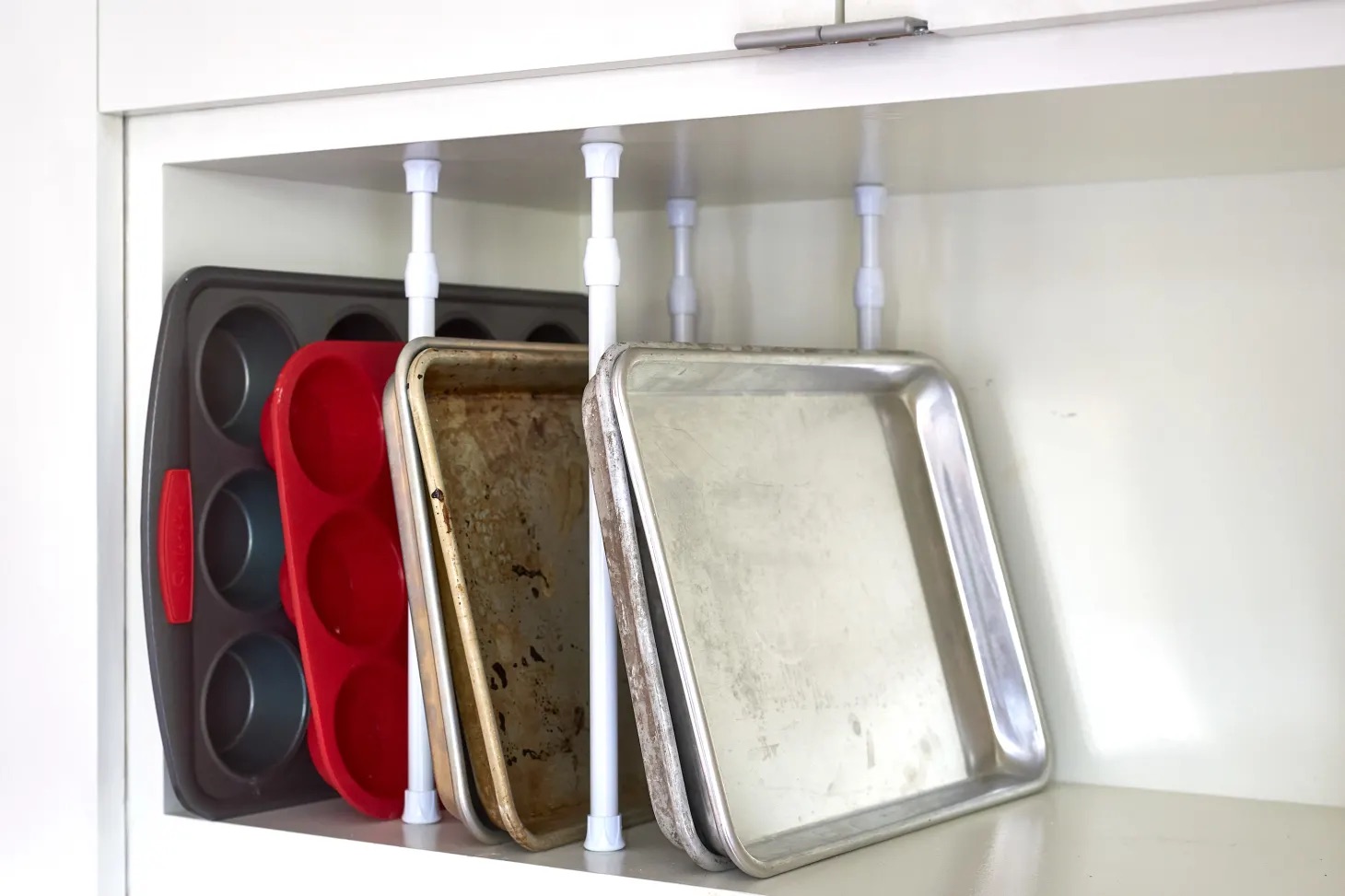

Articles
How To Store Stained Glass Sheets
Modified: October 20, 2024
Discover effective ways to store stained glass sheets with our helpful articles. Keep your glass organized and protected for your next creative project.
(Many of the links in this article redirect to a specific reviewed product. Your purchase of these products through affiliate links helps to generate commission for Storables.com, at no extra cost. Learn more)
Introduction
Welcome to the world of stained glass! Whether you are a professional artist or an enthusiastic hobbyist, storing your stained glass sheets properly is essential to ensure their longevity and maintain their vibrant colors. Stained glass sheets are delicate and susceptible to damage from dust, moisture, and improper handling. Therefore, it is crucial to establish a proper storage system to protect your investment and preserve the quality of your stained glass.
In this article, we will guide you through the steps to store stained glass sheets effectively. From gathering the necessary materials to maintaining the ideal conditions, you’ll learn how to keep your stained glass sheets in pristine condition for future use.
So, let’s get started and learn how to store stained glass sheets the right way!
Key Takeaways:
- Properly storing stained glass sheets is crucial for preserving their beauty and quality. Follow these steps to create an organized and secure storage system that protects your investment and ensures easy access for future projects.
- Regularly inspect and clean your stored stained glass sheets to extend their lifespan and maintain their pristine condition. By taking proactive measures, you can enjoy the beauty of stained glass art for years to come.
Read more: How To Stain A Glass
Step 1: Gather necessary materials
Before you begin storing your stained glass sheets, make sure you have the following materials on hand:
- Sturdy storage containers or racks: You will need containers or racks that are strong enough to support the weight of the glass sheets and provide proper protection.
- Divider materials: Consider using materials like foam dividers or cardboard inserts to separate the glass sheets and prevent them from rubbing or scratching against each other.
- Packing materials: Have a supply of clean, soft, and lint-free materials such as cotton sheets or tissue paper to wrap each individual glass sheet and provide an extra layer of protection.
- Labels and markers: Keep labels and markers handy to mark and identify each sheet. This will help you easily locate specific sheets when needed.
- Gloves: Wear cotton gloves while handling the glass sheets to prevent fingerprints and smudges. This will help maintain the pristine appearance of the glass.
Once you have gathered all the necessary materials, you are ready to move on to the next step: preparing a clean and dry storage area for your stained glass sheets.
Step 2: Prepare a clean and dry storage area
Creating a clean and dry storage area is crucial to protect your stained glass sheets from moisture, dust, and other potential damages. Follow these steps to prepare a suitable storage space:
- Clean the storage area: Before storing your stained glass sheets, ensure that the storage area is clean, dust-free, and free from any debris. Sweep or vacuum the space thoroughly and wipe down any surfaces to remove any dust or dirt.
- Avoid direct sunlight: Find a storage area that is away from direct sunlight. Prolonged exposure to sunlight can cause fading or discoloration of the glass. Consider using curtains or blinds to block out any excess sunlight if necessary.
- Maintain proper temperature and humidity: Stained glass is sensitive to temperature and humidity fluctuations. Aim to store your glass sheets in an area with a relatively stable temperature and humidity level. Ideally, the temperature should be between 50-70 degrees Fahrenheit (10-21 degrees Celsius), with a humidity level between 40-60%.
- Ensure proper ventilation: Adequate airflow is necessary to prevent moisture buildup and the development of mold or mildew. Avoid storing your glass sheets in damp or poorly ventilated spaces.
By preparing a clean and dry storage area, you create an optimal environment for your stained glass sheets. Now, let’s move on to the next step: protecting the individual stained glass sheets.
Step 3: Protect individual stained glass sheets
Now that you have prepared a clean and dry storage area, it’s time to focus on protecting each individual stained glass sheet. Follow these steps to ensure their safety:
- Wrap each sheet: Take a clean, soft, and lint-free material, such as cotton sheets or tissue paper. Place a sheet of the material on a flat surface and carefully lay the stained glass sheet on top. Fold the material over the glass, covering it completely. This will provide a cushioning effect and protect the glass from scratches and dust.
- Secure the wrapping: Use painter’s tape or any non-abrasive tape to secure the folded material in place. Avoid using regular adhesive tape that could potentially damage the glass or leave sticky residue.
- Consider using dividers: If you are storing multiple glass sheets together, insert foam dividers or cardboard cutouts between each sheet to prevent them from rubbing against each other. This additional layer of protection will minimize the risk of chipping or cracking.
- Handle with care: When moving or placing the wrapped glass sheets into the storage containers or racks, be gentle and avoid any sudden movements or impacts. Remember to wear gloves to prevent fingerprints or smudges on the glass.
By providing individual protection for each stained glass sheet, you minimize the risk of damage and ensure their longevity. Now, let’s move on to the next step: organizing and stacking the sheets.
Step 4: Organize and stack the sheets
Once you have protected each stained glass sheet, it’s time to organize and stack them in your storage area. Follow these steps to ensure an organized and efficient storage system:
- Group similar sizes and types: Start by grouping the glass sheets according to their sizes and types. This will make it easier to locate specific sheets when needed. Consider using separate containers or racks for each category.
- Create a logical stacking order: When stacking the glass sheets, place the larger and heavier sheets at the bottom to provide a stable base. If you have varying sizes, stack them from largest to smallest. This will prevent any potential accidents or damage caused by shifting or toppling stacks.
- Leave space between stacks: Allow some space between each stack to provide proper airflow and reduce the risk of accidentally knocking over the stacks. Avoid overcrowding the storage area to maintain easy access to each sheet.
- Consider vertical storage: If you have limited space, consider storing the glass sheets vertically in specially designed rack systems or storage units. This allows you to maximize the use of vertical space while keeping the sheets organized and easily accessible.
By organizing and stacking the glass sheets in a logical and systematic manner, you establish an efficient storage system that promotes easy access and minimizes the risk of accidents or damage. Now, let’s move on to the next step: labeling and categorizing the stored sheets.
Store stained glass sheets vertically in a rack or holder to prevent breakage and minimize the risk of scratching or damaging the surface. Keep them in a cool, dry place away from direct sunlight to avoid warping or discoloration.
Read more: How To Solder Stained Glass
Step 5: Label and categorize the stored sheets
Labeling and categorizing your stored stained glass sheets is crucial for easy identification and retrieval. Follow these steps to ensure efficient organization:
- Use clear and visible labels: Use adhesive labels or tags to clearly mark each storage container or rack. Include relevant information such as the type of glass, color, size, and any other details that will help you identify the sheet quickly.
- Create a catalog or inventory list: Maintain a catalog or inventory list that lists all the stored glass sheets, along with their respective locations. This will serve as a reference when you need to locate specific sheets without having to search through all the containers or racks.
- Group sheets by project or theme: If you often work on specific projects or themes, consider grouping the glass sheets accordingly. For example, you can have separate sections for floral designs, geometric patterns, or holiday-themed glass sheets. This makes it easier to access sheets when you are working on a particular project.
- Update and review periodically: Regularly review and update your labeling system as you add or remove glass sheets from storage. This will help you maintain an accurate inventory and ensure that everything is properly categorized.
By labeling and categorizing your stored glass sheets, you create a streamlined system that allows for easy identification and retrieval. Now, let’s move on to the next step: maintaining proper temperature and humidity levels.
Step 6: Maintain proper temperature and humidity levels
In order to preserve the quality of your stained glass sheets, it is important to maintain the proper temperature and humidity levels within your storage area. Follow these steps to create an optimal environment:
- Temperature control: Stained glass is sensitive to extreme temperatures, so it’s important to keep the storage area within a moderate range. Aim for a temperature between 50-70 degrees Fahrenheit (10-21 degrees Celsius). Avoid storing the glass in areas prone to high heat, such as attics or near radiators.
- Humidity regulation: Excess moisture can lead to mold, mildew, and deterioration of the stained glass. Aim for a humidity level between 40-60%. Avoid storing the glass in damp or humid areas, like basements or areas with poor ventilation. Consider using dehumidifiers or moisture-absorbing products to maintain the ideal humidity level.
- Avoid sudden temperature changes: Rapid fluctuations in temperature can cause the glass to expand or contract, leading to potential cracks or breakage. Avoid exposing the glass to drafts or sudden changes in temperature.
- Monitor the conditions: Use a digital thermometer and hygrometer to regularly monitor the temperature and humidity levels in the storage area. This will help you identify any fluctuations and make adjustments as needed.
By maintaining proper temperature and humidity levels, you provide a stable and controlled environment for your stained glass sheets, ensuring their longevity and preventing any damage caused by unfavorable conditions. Now, let’s move on to the final step: regularly inspecting and cleaning the stored sheets.
Step 7: Regularly inspect and clean the stored sheets
Regular inspection and cleaning of your stored stained glass sheets are essential to ensure their quality and prevent any deterioration. Follow these steps to keep your glass in pristine condition:
- Scheduled inspections: Set a regular schedule to inspect your stored glass sheets. This can be done monthly or quarterly, depending on the size of your collection and how frequently you use the glass. During these inspections, carefully examine each sheet for any signs of damage, such as cracks, chips, or discoloration.
- Repair or replace damaged sheets: If you notice any damaged glass sheets during your inspections, take immediate action to repair or replace them. Consult with a professional if needed, especially for complex repairs. It is important to address any issues promptly to prevent further damage.
- Clean with care: Use a soft, lint-free cloth or a glass cleaning solution specifically designed for stained glass to gently wipe away any dirt or smudges. Avoid using harsh chemicals or abrasive materials that might scratch or damage the glass surface. Take extra care around delicate designs or painted areas.
- Control dust accumulation: Regularly dust the storage containers or racks to prevent dust from settling on the glass sheets. Dust can not only affect the appearance of the glass but also potentially clog intricate designs. Use a soft microfiber cloth or a duster for this purpose.
- Keep a record of maintenance: Maintain a record of the inspections, repairs, and cleaning activities you perform on your stained glass sheets. This will help you track the condition of each sheet and ensure that they are well-maintained over time.
By regularly inspecting and cleaning your stored stained glass sheets, you can extend their lifespan and enjoy their beauty for years to come. With these steps completed, you have successfully learned how to store and maintain your stained glass collection.
Remember, proper storage and care are essential for preserving the beauty and integrity of stained glass. By following these steps, you can ensure that your glass sheets remain in excellent condition and ready for your next inspiring project.
As the famous artist Louis Comfort Tiffany once said, “Color is to the eye what music is to the ear.” So, continue to create beautiful works of stained glass art with confidence, knowing that your sheets are stored and protected with care.
Conclusion
Storing stained glass sheets properly is crucial for maintaining their beauty and preserving their quality. By following the steps outlined in this article, you can create an organized and secure storage system for your glass sheets.
Starting with gathering the necessary materials, preparing a clean and dry storage area, and protecting each individual sheet with proper wrapping and dividers, you ensure that the glass is safeguarded from dust, moisture, and damage.
Organizing and stacking the sheets in a logical order, labeling and categorizing them, and maintaining the ideal temperature and humidity levels create an efficient storage system that allows for easy access and prevents any potential accidents or deterioration.
Regularly inspecting and cleaning the glass sheets is essential for identifying and addressing any damage or dirt that may have accumulated over time. Taking prompt action to repair or replace damaged sheets, along with maintaining a record of maintenance activities, helps to ensure the longevity of your stained glass collection.
Remember, stained glass is not just a material but a form of art that requires care and attention. By implementing these storage practices, you can preserve the beauty and integrity of your stained glass sheets for future projects and generations to come.
So, with your newfound knowledge, go ahead and store your stained glass sheets with confidence, knowing that you are taking the necessary steps to protect and preserve your investment in this beautiful art form.
Frequently Asked Questions about How To Store Stained Glass Sheets
Was this page helpful?
At Storables.com, we guarantee accurate and reliable information. Our content, validated by Expert Board Contributors, is crafted following stringent Editorial Policies. We're committed to providing you with well-researched, expert-backed insights for all your informational needs.















0 thoughts on “How To Store Stained Glass Sheets”